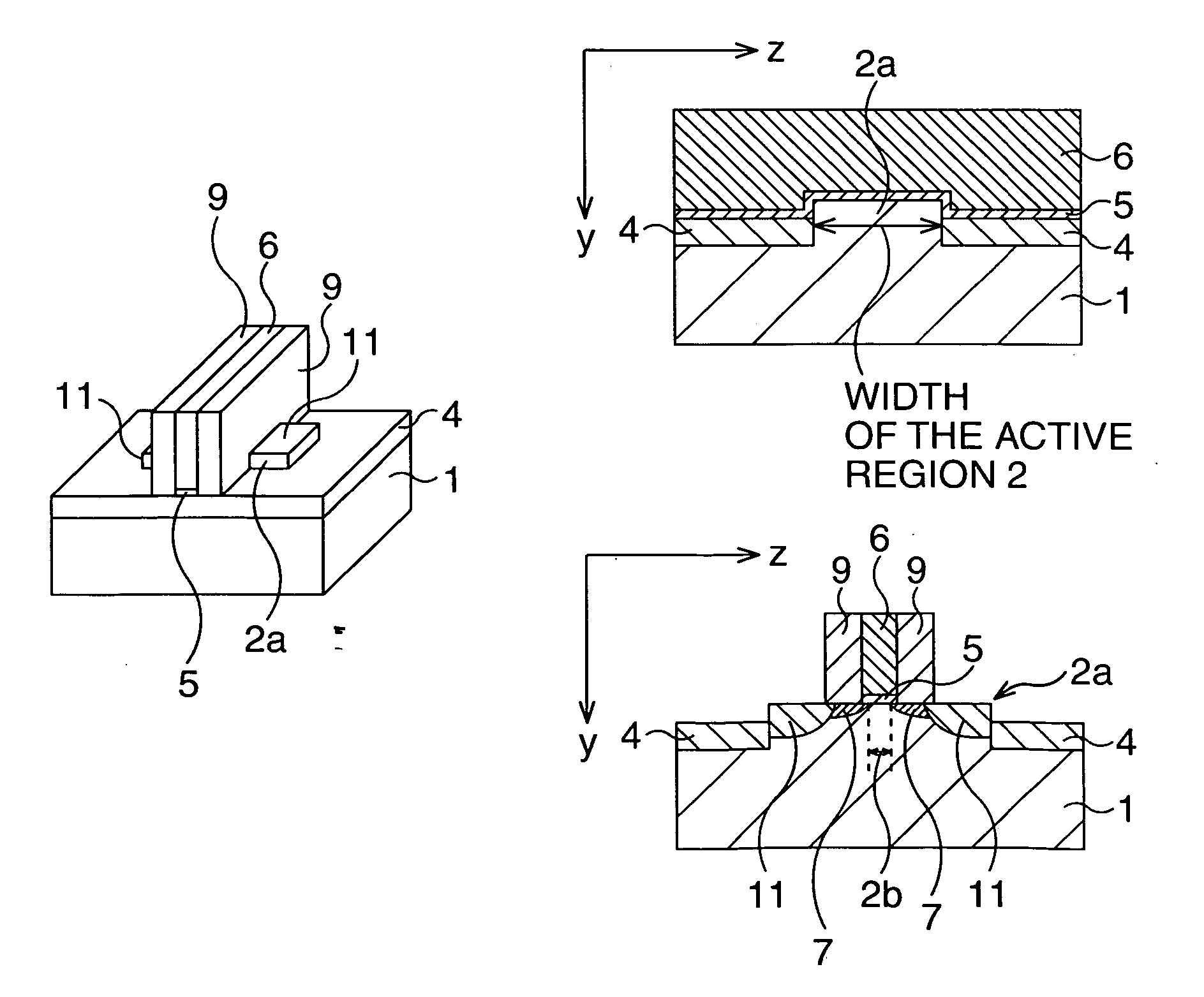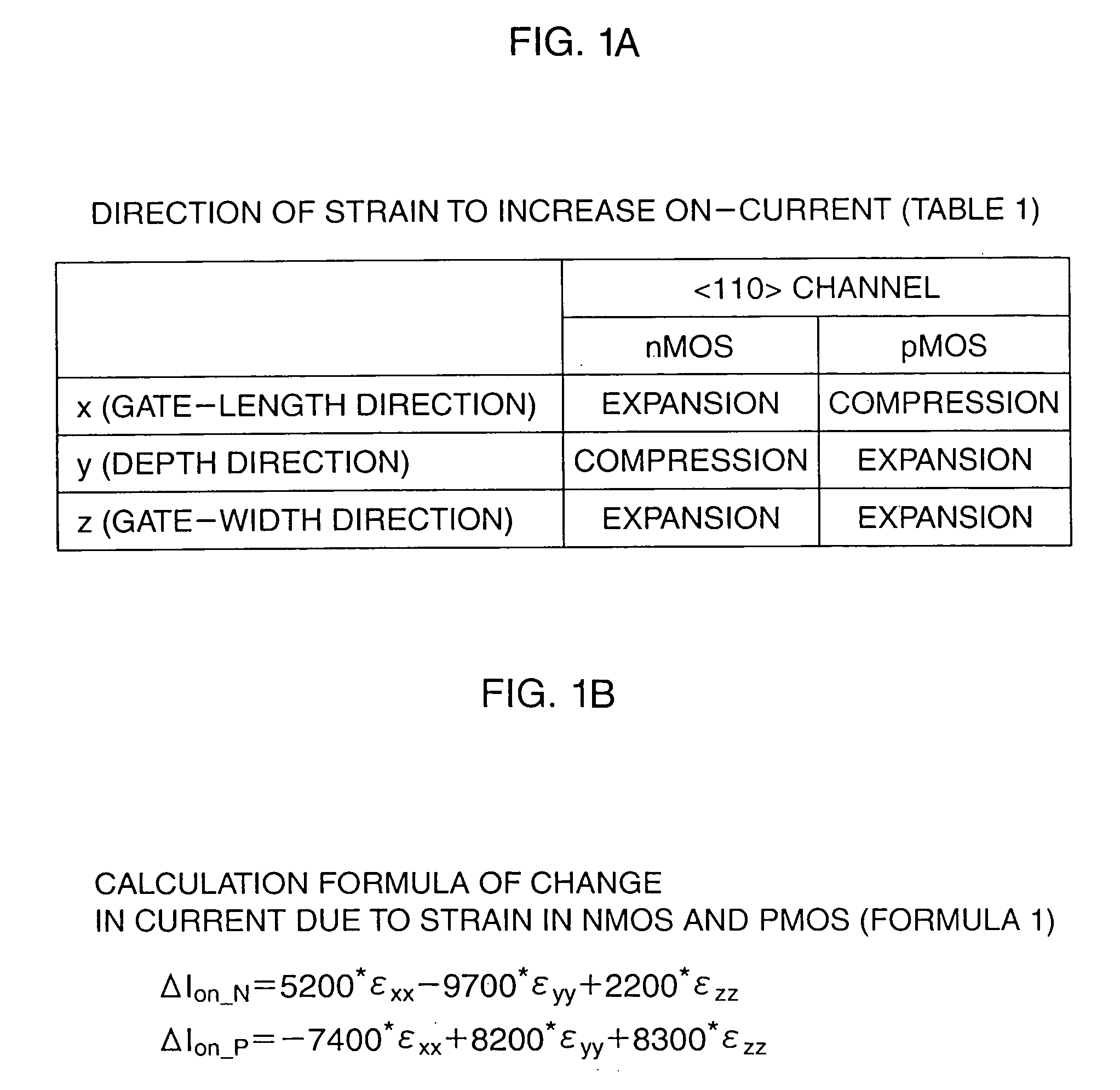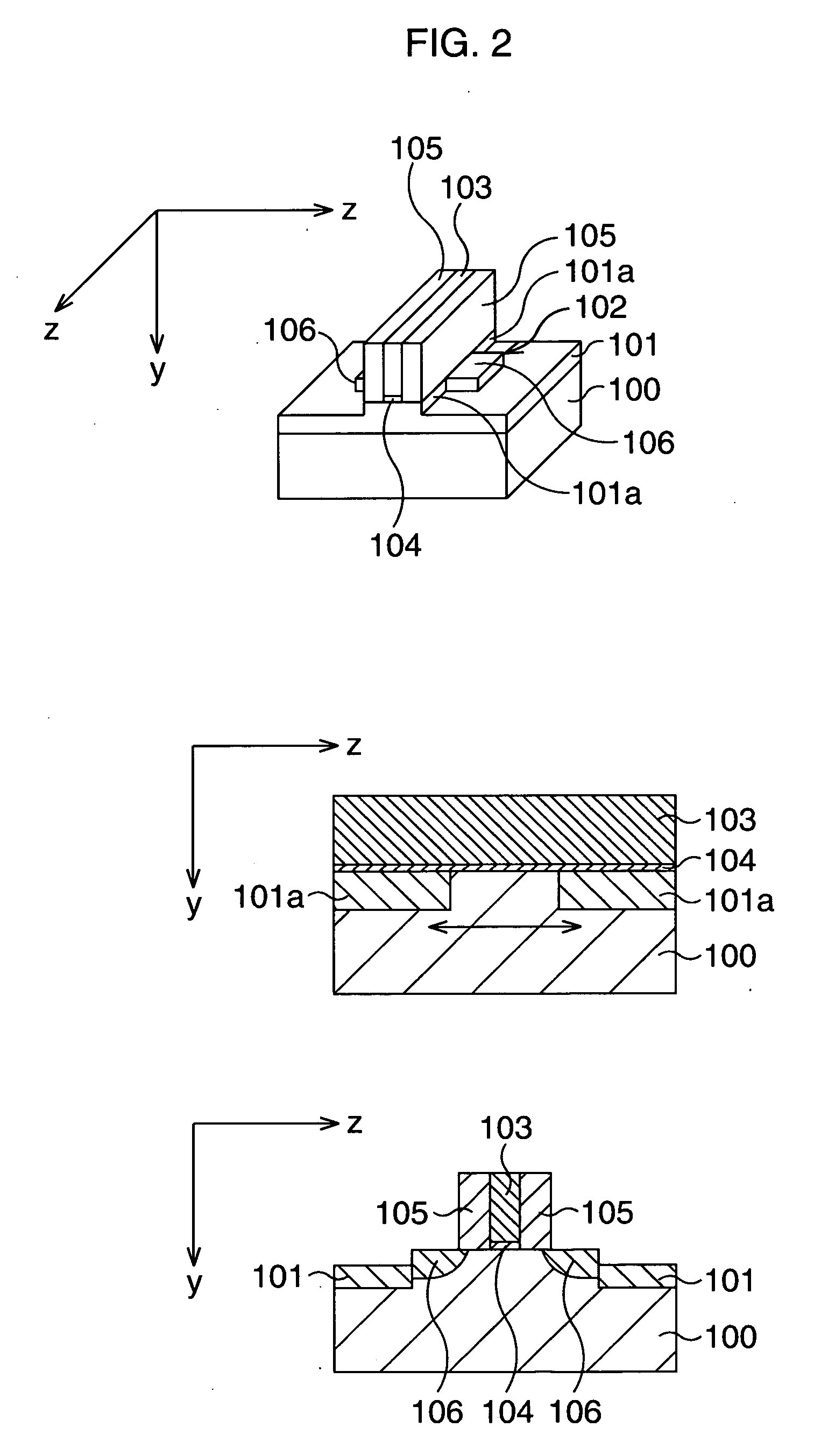Semiconductor device and method of manufacturing the same
a technology of semiconductor devices and semiconductors, applied in the field of semiconductor devices, can solve the problems of many difficulties in technique and manufacturing cost realization, increase in process and process complexity, and decrease in on-current of sti element isolation structures, so as to reduce stress efficiently, improve on-current, and reduce gate-width direction dependence
- Summary
- Abstract
- Description
- Claims
- Application Information
AI Technical Summary
Benefits of technology
Problems solved by technology
Method used
Image
Examples
first embodiment
[0038] -First Embodiment-
[0039]FIGS. 3A to 3C are schematic perspective views showing main processes in a method of manufacturing a CMOS transistor according to the first embodiment selected only for the P-type MOS transistor, and FIG. 3C that is a completion view of the P-type MOS transistor additionally shows schematic cross-sectional views along a z-y plane and an x-y plane of the transistor. FIGS. 4A to 4F are schematic cross-sectional views showing the method of manufacturing the CMOS transistor according to the first embodiment in the order of processes, each view corresponding to a schematic cross section along the x-y plane shown in FIG. 3C.
[0040] First, as shown in FIG. 3A and FIG. 4A, on a silicon substrate 1, an active region 2 of the P-type MOS transistor and an active region 3 of the N-type MOS transistor are defined, respectively.
[0041] More specifically, element isolation structures are formed respectively within the element isolation region for the P-type MOS trans...
modification example -
[0060] -Modification Example-
[0061] Here, a modification example of the first embodiment will be described. In this modification example, a CMOS transistor is manufactured as in the first embodiment, but is different in that a process is added which relieves the stress of the STI element isolation structure 4 by introduction of an element.
[0062]FIGS. 5A and 5B are schematic views showing processes added to the first embodiment in this modification example, and FIG. 5A is a schematic plan view and FIG. 5B is a schematic cross-sectional view along a broken line I-I in FIG. 5A.
[0063] First, processes in FIGS. 4A and 4B (FIGS. 3A and 3B) are performed.
[0064] Subsequently, as shown in FIGS. 5A and 5B, a resist mask 13 covering the active region 2 and extending in the x-direction is formed only within the active region 2 for the P-type MOS transistor.
[0065] More specifically, a resist is applied over the entire surface and processed by lithography to thereby form the resist mask 13 on...
second embodiment
[0073] -Second Embodiment-
[0074]FIGS. 6A to 6C are schematic views showing main processes in a method of manufacturing a CMOS transistor according to the second embodiment selected only for the P-type MOS transistor. The left drawing is a schematic perspective view and the right drawing is a schematic plan view in each of FIGS. 6A and 6B, and FIG. 6C illustrates a schematic plan view of a completion view of the P-type MOS transistor showing the state in which its gate insulation film, gate electrode, and side wall spacers are removed therefrom. In the drawings of FIGS. 6A to 6C, the numerals and symbols of components and so on associated with the N-type MOS transistor are shown in parentheses. FIGS. 7A to 7E are schematic cross-sectional views showing the method of manufacturing the CMOS transistor according to the second embodiment in the order of processes, each view corresponding to a schematic cross section along an x-y plane shown in FIGS. 6A to 6C. Note that the same numerals ...
PUM
 Login to View More
Login to View More Abstract
Description
Claims
Application Information
 Login to View More
Login to View More - R&D
- Intellectual Property
- Life Sciences
- Materials
- Tech Scout
- Unparalleled Data Quality
- Higher Quality Content
- 60% Fewer Hallucinations
Browse by: Latest US Patents, China's latest patents, Technical Efficacy Thesaurus, Application Domain, Technology Topic, Popular Technical Reports.
© 2025 PatSnap. All rights reserved.Legal|Privacy policy|Modern Slavery Act Transparency Statement|Sitemap|About US| Contact US: help@patsnap.com



